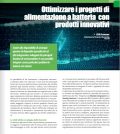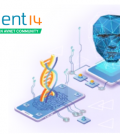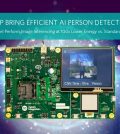Interface ICs – Answers provided by Timothy Leung, senior business manager, Maxim Integrated

EONEWS: What are your opinions regarding the major trends for this market (slowing, growing, booming…)?
LEUNG: We see the Interface IC market continuing to grow at a positive pace. We are seeing a trend for Factory automation Machines to get smarter, and move the processing away from centralized machines, but more towards distributed control machines that directly communicate with sensors/actuators. This in turn drives the demand for more sensor communication, to allow production factory floors to reduce lag time, shorten control loops and increase manufacturing production efficiency and optimize for better operation.
Economic factors always play a role in the bottom line of a factory, which include not only production time, but also ensuring that the factory stays running: examples include factory uptime, which is correlated with the reliability and robustness of your machines. Keeping your factory running affects how quickly you can operate and ultimately the bottom line. Over $800 billion is spent/yr on maintaining factories, we think this can be reduced by 10%.
EONEWS: What are the key strategies adopted by your company in the short/medium period to address (or to better address) the needs of the market?
LEUNG: As these factory automation environments are tough, robust communications across the fieldbus networks and directly with sensors are key components to increase factory uptime.
To address the demand for smarter decentralized systems that communicate directly with sensors, Maxim partnered with the IO-Link consortium to develop the Industry’s smallest, most robust, and most flexible IO-Link solution. This breakthrough technology enables our customers to develop smarter sensor system that allow you to read/write/and also reconfigure all across the same data line. With a robust Master and Device transceiver, along with a flexible quad IO-link optimized UART, we deliver the most scalable complete IO-Link solution. Integrated robustness and diagnostics such as reverse polarity protection, short circuit protection, and fault monitoring improves system uptime. As the amount of sensors are increasing, this drives the demand for smaller sensors. Maxim’s WLP Device IO-link transceivers enables sensor designers to develop smaller sensors.
To address the demands for robust communications across the Fieldbus and for Motor control, we surveyed our ‘Industrial’ customers to understand what was the most common reason for system field returns. The most common answer we heard was ESD. As Maxim originally set the bar by developing the industry’s first +/-15KV HBM ESD protected transceivers, we strived to help reduce our customers’ ESD concerns by improving our RS-485 transceiver ESD technology to achieve +/-35KV HBM, which is >2x the competition. To further address improving factory uptime, we deliver the highest levels of fault protection (+/-80V) to protect against shorts or miswiring and we have developed a unique fault detection feature which allows an LED light or signal to be sent back to the µC to note if there is a fault.
EONEWS: What are you doing in order to implement your strategies (partnership/agreements, new acquisitions, investments in activities like R&D, people…)?
LEUNG: We participate in the IO-Link consortium and delivered a complete Master and Device IO-Link solution. We are continuing to survey our Industrial customers’ true needs, and delivering solutions that enable breakthrough technology to improve how efficiently factories worldwide operate.
EONEWS: What are the most important application?
LEUNG: Our key focus for Interface ICs is targeted towards Factory Automation.
EONEWS: Which are the key factors that set your company apart from the competition?
LEUNG: Maxim Integrated has a long history of delivering not only the industry’s most robust transceivers, but our goal to partner with our customers to understand their needs, and deliver breakthrough technology that are aimed to truly help make an impact.
EONEWS: And in the middle/long term (if you have a crystal ball!)?
LEUNG: Higher integration products that continue to enable smarter, more flexible systems, and higher throughput systems while improving uptime to enable lower production costs.
Edited by the Editorial Staff
Contenuti correlati
-
Ottimizzare i progetti di alimentazione a batteria con prodotti innovativi
Grazie alla disponibilità di un’ampia gamma di dispositivi specializzati ad alta integrazione sviluppati dai principali fornitori di semiconduttori è ora possibile integrare senza particolari problemi le batterie nei sistemi Leggi l’articolo completo su EO Power 30
-
Schede di sviluppo: passato, presente e tendenze per il futuro
Negli ultimi anni, il significato dell’espressione “scheda di sviluppo” si è perso in una miriade di termini utilizzati per descrivere le schede hardware impiegate nello sviluppo, ad esempio “schede demo”, “kit di valutazione” e “design di riferimento”...
-
Il concorso “Experimenting with Current Sense Amplifiers” di element14
La community element14 ha lanciato un nuovo concorso con Maxim Integrated focalizzato sulla sperimentazione con MAX40080, un amplificatore digitale di rilevamento della corrente bidirezionale a risposta rapida e ad alta precisione. Gli amplificatori di rilevamento della corrente...
-
Integrare l’apprendimento automatico nelle applicazioni industriali
L’apprendimento automatico può essere una tecnologia particolarmente utile per le applicazioni industriali, in grado di migliorare la produzione e altri processi incrementando efficienza, scalabilità e produttività a fronte di un contenimento dei costi Leggi l’articolo completo su...
-
Progettazione mixed-signal: la specializzazione stimola l’innovazione
Settore molto specializzato, la progettazione a segnali misti richiede il supporto di partner in grado di analizzare al meglio le esigenze dei progettisti per indirizzarli nella scelta dei dispositivi più adatti per lo sviluppo dei loro design Leggi...
-
La nuova soluzione per il monitoraggio dei sistemi di Maxim
Maxim Integrated ha aggiunto alla sua linea di prodotti MAXSafe Technology con MAX22530, un monitor di sistema a 12 bit autoalimentato dotato di 4 canali. Questo componente fornisce un monitoraggio isolato del sistema migliorando di 50 volte...
-
Maxim Integrated e Aizip insieme per il rilevamento delle persone con bassi consumi di energia
La collaborazione fra Maxim Integrated e Aizip ha permesso di ridurre l’assorbimento di energia per rilevare la presenza di persone in un’immagine. In particolare, il microcontrollore per reti neurali MAX78000 di Maxim Integrated può di svolgere questo...
-
Nuovi prodotti Mouser per il controllo motore
Mouser Electronics propone a stock un vasta gamma di nuove soluzioni per il controllo motore realizzate da aziende come STMicroelectronics, recentemente ampliata con i nuovi modulatori di Analog Devices, dispositivi innovativi ideati per fornire un feedback di tipo...
-
Potenziare l’intelligenza ai margini
Come dotare di un numero maggiore di funzionalità una determinata apparecchiatura che opera ai margini in modo che possa prendere decisioni migliori, adattarsi all’ambiente circostante e garantire un nuovo livello di flessibilità Leggi l’articolo competo...
-
Maxim Integrated presenta tre nuovi componenti Essential Analog
Tre nuovi componenti della serie Essential Analog di Maxim Integrated consentono ai progettisti di estendere la durata della batteria e ridurre le dimensioni delle soluzioni destinate ai settori consumer, industriale, medicale e IoT. MAX17227A è un convertitore...



















